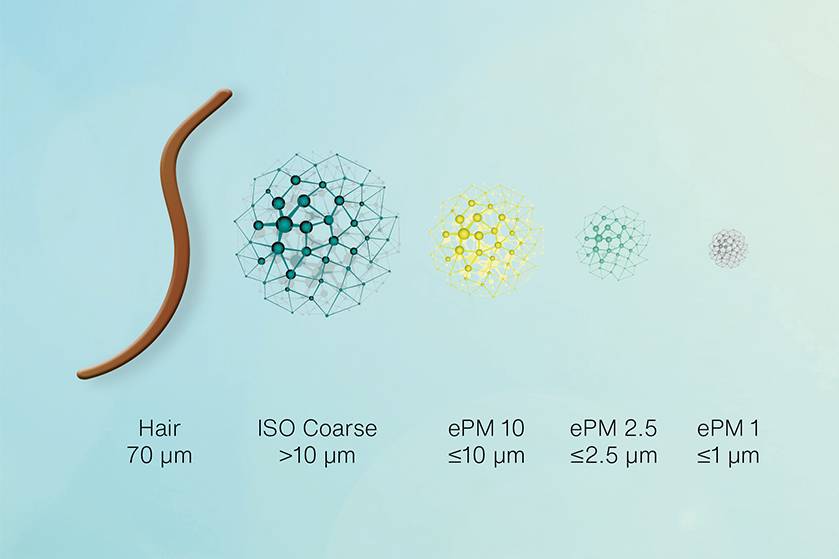You may not know the phrase "particulate matter," but you certainly know its more common name – dust. It surrounds us every day, and sometimes, it's coarse enough to be seen floating in the air or settling on surfaces. Other times, particulate matter is so small, it's invisible to the naked eye, but that doesn't mean it's not a problem. In fact, fine particles stay in the air longer, meaning they actually may be a bigger threat than the coarse stuff. So what can you do to protect yourself?

Fine particles are divided into two different sizes (the same as course dust), measured in units known as PM, which stands for "particulate matter."
PM2.5
The most common kind of dust, PM2.5, describes particles with a diameter of less than 0.0025 mm.
PM1 Fine dust
These are the kinds of fine particles that are invisible to the naked eye, because they have a diameter of less than 0.001mm. PM1 dust may pose an even greater threat than PM2.5, because these particles are small enough to enter the bloodstream.
What is respirable dust?
Both types of dust above fall under the category of "respirable dust," which means they are small enough to get deep into the lungs when breathed in. These fine particles are so small, they can even be deposited into the alveoli.
In urban areas, PM1 particles are the most common pollutants in both residential and industrial settings. They are commonly released when power plants and combustion engines use fossil fuels, like oil, diesel, gas, and coal, causing the fine particles from these processes to end up in the environment and indoor spaces.
In 2017, a study out of China that used air measurement stations looked at how high the proportion of PM1 fine dust was in the total mass of PM2.5 particulate matter:
Researchers found that PM1 fine dust made up nearly 80 % of the total amount of fine particles. This is a major red flag, because the same study found a connection between fine dust in the air we breathe and the number of visits reported in emergency health units – most reported health problems were attributed to PM1.
You might think your particulate matter problems are easily solved by simply shutting your doors and windows. If only it were that easy! However, fine particles don't care whether your doors and windows are open or closed – they can find their way inside regardless.
This is because fine dust can get into the air in many different ways. If you work in a building that uses heavy machinery or vehicles like forklifts, for example, you can bet you're at risk of pollution from particulate matter.
Here are common indoor sources of fine dust:
Particulate matter can be harmful in a few different ways (for example, it can cause environmental damage). But we humans are at risk as well – and the longer you and your employees go on breathing it in, the worse it will get.
Over an extended period of time, inhaling fine particles can lead to:
Those who are already living with asthma or chronic obstructive pulmonary disease (COPD) are more likely to experience the adverse effects of particulate matter in the environment.
We've covered the risk fine particles pose to your employees and customers. But beyond that, PM1 can:
Thankfully, there are simple and effective measures you can take to protect your employees and your business from the harms of particulate matter.
At Zehnder Clean Air Solutions, we have a proven track record when it comes to eliminating fine dust particles. Our air purification systems can pull up to 90 % of particulate matter from the air before anyone has a chance to breathe them in.
What's more, our industrial air purifiers are highly adaptable to an business, allowing us to help companies reduce sick leave requests by as much as 50 %.
To complete your subscription to our newsletter, simply click on the link in your inbox. If you don't receive anything, check your spam folder to be sure.